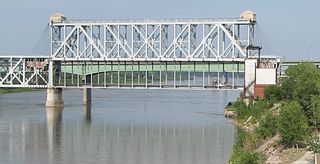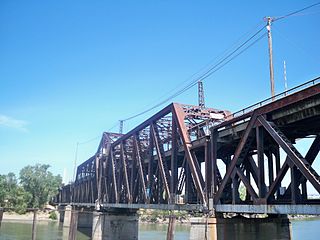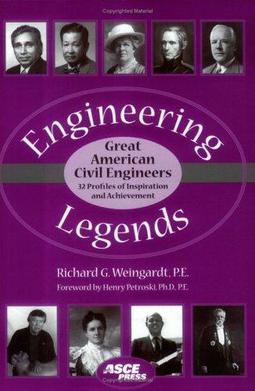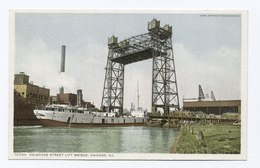
The Hawthorne Bridge is a truss bridge with a vertical lift that spans the Willamette River in Portland, Oregon, joining Hawthorne Boulevard and Madison Street. It is the oldest vertical-lift bridge in operation in the United States and the oldest highway bridge in Portland. It is also the busiest bicycle and transit bridge in Oregon, with over 8,000 cyclists and 800 TriMet buses daily. It was added to the National Register of Historic Places in November 2012.

The Marine Parkway–Gil Hodges Memorial Bridge is a vertical-lift bridge in New York City, New York, that crosses Rockaway Inlet. The bridge, which opened on July 3, 1937, connects the Rockaway Peninsula in Queens, with Flatbush Avenue to Floyd Bennett Field, Belt Parkway, and the Marine Park neighborhood in Brooklyn. The bridge is designated as New York State Route 901B, an unsigned reference route.

The Aerial Lift Bridge, earlier known as the Aerial Bridge or Aerial Ferry Bridge, is a landmark in the port city of Duluth, Minnesota. The span began life in 1905 as the United States' first transporter bridge: Only one other was ever constructed in the country, Sky Ride in Chicago. The span was converted in 1929–1930 to a vertical-lift bridge, also rather uncommon, although there are six such bridges along Ontario's Welland Canal. It remains in operation. The bridge is owned and operated by the City of Duluth. The bridge was added to the National Register of Historic Places on May 22, 1973. The United States Army Corps of Engineers maintains a nearby maritime museum.

Dr. John Alexander Low Waddell was a Canadian-American civil engineer and prolific bridge designer, with more than a thousand structures to his credit in the United States, Canada, as well as Mexico, Russia, China, Japan, and New Zealand. Waddell’s work set standards for elevated railroad systems and helped develop materials suitable for large span bridges. His most important contribution was the development of the steam-powered high-lift bridge. Waddell was a widely respected writer on bridge design and engineering theory, as well as an advocate for quality in higher education engineering programs. The company he founded in 1887, 'J.A.L. Waddell, Consulting Engineer,' would eventually become the modern day Hardesty & Hanover, a leading moveable bridge engineering firm. Many of Waddell's surviving bridges are now considered historic landmarks.

William Hepburn Russell (1812–1872) was an American businessman. He was a partner, along with Alexander Majors and William B. Waddell, in the freighting firm Russell, Majors, and Waddell and the stagecoach company the Central Overland California and Pikes Peak Express Company which was the parent company of the Pony Express. His public life is one of numerous business ventures, some successful and some failed. While Russell, described as a good-looking man, lived the majority of his life on the edge on the western frontier, he was always more at home in the upper-class settings of the East coast.

The New Westminster Bridge is a swing bridge that crosses the Fraser River and connects New Westminster with Surrey, British Columbia, Canada.

The Jordan Bridge, officially named the South Norfolk Jordan Bridge, is a tolled highway fixed bridge which carries State Route 337 over the Southern Branch Elizabeth River between the City of Portsmouth into the City of Chesapeake in South Hampton Roads, Virginia. The new crossing is an all-electronic toll facility that eliminated bridge lifts and height and weight restrictions and restored a vital river crossing for the Hampton Roads region.

The Newark Bay Bridge of the Central Railroad of New Jersey (CNJ) was a railroad bridge in New Jersey that connected Elizabethport and Bayonne at the southern end of Newark Bay. Its third and final incarnation was a four-track vertical-lift design that opened in 1926, replacing a bascule bridge from 1904 which superseded the original swing bridge from 1887. The bridge served the main line of the CNJ, carrying daily interstate trains as well as commuter trains.

The Armour-Swift-Burlington (ASB) Bridge, also known as the North Kansas City Bridge and the LRC Bridge, is a rail crossing over the Missouri River in Kansas City, Missouri, that formerly also had an upper deck for automobile traffic.

HNTB Corporation is an American infrastructure design firm. Founded in 1914 in Kansas City, Missouri, HNTB began with the partnership made by Ernest Emmanuel Howard with the firm Waddell & Harrington, founded in 1907.

The I Street Bridge is a historic metal truss swing bridge which crosses the Sacramento River to link the capital city of Sacramento, California, with Yolo County to the west.

The Greenpoint Avenue Bridge is a drawbridge that carries Greenpoint Avenue across Newtown Creek between the neighborhoods of Greenpoint, Brooklyn and Blissville, Queens in New York City. Also known as the J. J. Byrne Memorial Bridge, the bridge is named after James J. Byrne, who served as Brooklyn Borough President from September 1926 until he died in office on March 14, 1930. Previously, Byrne was the Brooklyn Commissioner of Public Works.

The Canal Street railroad bridge is a vertical-lift bridge across the south branch of the Chicago River in Chicago, Illinois. It was designated a Chicago Landmark on December 12, 2007.

Ira Grant Hedrick was an American civil engineer who designed the Burnside Bridge in Oregon, the Red River Bridge, Clarendon, and Newport bridges in Arkansas, and many other bridges and viaducts. Hedrick designed many large scale bridges in Arkansas in late 1920s through early 1930s. Hedrick was also president of the Kansas City Viaduct and Terminal Railway Company. The Historic American Engineering Record says that he was "one of the outstanding engineers of the South".

Engineering Legends: Great American Civil Engineers is a 2005 book by engineer Richard Weingardt. The book features a list of 32 engineering legends from the 1700s to the present, including Fazlur Khan, Hal Iyengar, Tung-Yen Lin, Benjamin Wright, and Fred Severud.

Waddell & Harrington was an American engineering company that designed bridges from 1907 to 1915. It was formed in 1907 as a partnership of John Alexander Low Waddell (1854–1938) and John Lyle Harrington (1868–1942) and was based in Kansas City, Missouri, but had offices in Portland, Oregon, and Vancouver, British Columbia. The company designed more than 30 vertical-lift bridges for highways and railroads.

The Lincoln Highway Passaic River Bridge is a vehicular moveable bridge crossing the Passaic River at a point 1.8 mi (2.9 km) from the river mouth at Newark Bay in northeastern New Jersey, United States. The vertical lift bridge, along the route of the Lincoln Highway, carries U.S. Route 1/9 Truck and the East Coast Greenway between the Ironbound section of Newark and Kearny Point in Kearny. Opened in 1941, it is owned by and operated by the New Jersey Department of Transportation (NJDOT) and required by the Code of Federal Regulations to open on 4-hour notice for maritime traffic.

John Lyle Harrington was an American civil engineer and a leading expert in the field of moveable bridge design. He was a senior partner in several bridge engineering firms, President of the American Society of Mechanical Engineers in 1923-24, and Chief of the engineers' board advising the Reconstruction Finance Corporation.

The Waddell "A" Truss Bridge is standardized truss bridge design that was first patented in 1893 by prolific civil engineer John Alexander Low Waddell. The design provided a simple low-cost, high-strength solution for use by railroads across the United States and Empire of Japan for short spans of around 100 ft. According to the Historic American Engineering Record (HAER), "beyond its role in the growth of railroad transportation, the "A" truss is perhaps most historically significant when viewed within the context of Waddell's career and the emergence of the American bridge fabrication industry into international marketing."

The Mill Basin Bridge is a seven-lane, fixed girder bridge in Brooklyn. It is owned and maintained by the New York City Department of Transportation (NYCDOT) and spans Mill Basin inlet. Completed in February 2019, the span replaces a Bascule bridge originally constructed in 1940. The bridge carries passenger vehicles via the Belt Parkway and pedestrians and cyclists via the Jamaica Bay Greenway.


























